Forest Lawn Museum, Glendale
 |
| 1951 restoration of Jan Styka's "The Crucifixion" in its purpose-built Hall at Forest Lawn. |
 |
| Cloudcuckooland Today wishes you a Happy Memorial Day from Forest Lawn. |
The Forest Lawn Museum is running a fascinating free exhibit on the history of panoramas and cycloramas. In other words, visionary gigantism. After enjoying the visionary gigantism on display at the Broad, this exhibit, "Grand Views," embiggened my understanding of the trope of visionary gigantism in LA, and its role in LA's outsized artistic identity.
The technical solutions to building structures that showcase the art is a central theme of the exhibit. Real estate plays a big role in visionary gigantism; traveling exhibitions and World's Fairs do, too.
 |
| A 2010 recreation of an 1853 traveling cabinet cyclorama, portraying a Gold Rush Argonaut's trip 'round the Horn. Theatrical rigging, scrolling images. Motion pictures! |
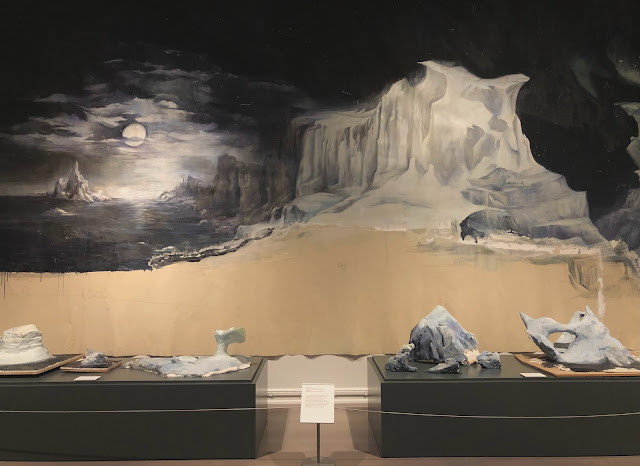 |
| Bits of a recent panorama that offers a chilling dreamscape. The illusion was enhanced with bits of 3-D flotsam, allowing viewers to be immersed for a moment in surrealist or Jungian contemplation. |
The exhibit makes the remarkable point that panorama is in no way a defunct Victorian art form. There is a direct line from panorama to theatrical scenery to tableaux-vivants, to motion pictures, to the cyclotron movie backdrop, to Cinerama, to IMax, to virtual reality goggles and the ever-elusive dream of a "Metaverse." Follow the impulse of visionary gigantism, and you follow the money.
 |
| Mid-century movie studio backdrop |
 Of course, the reason this exhibit is at Forest Lawn at all is because of the history of Hubert Eaton's own visionary gigantism.
Of course, the reason this exhibit is at Forest Lawn at all is because of the history of Hubert Eaton's own visionary gigantism.
"The Crucifixion," Jan Styka's 1894 blockbuster panorama, had been stranded for years in a St. Louis warehouse after the Louisiana Purchase Exposition closed. Eaton bought the picture in 1925, restored it, and constructed a massive auditorium for it at his innovative, over-sized cemetery.
 |
Three visionary gigantists contributed to"The Crucifixion:" Jan Ignace Paderewski, the pianistic superstar-turned Premier of free Poland who commissioned it; panoramist Jan Styka; and Eaton.  |
 |
| Styka's palette, blessed by the Pope |
 |
| God, the original visionary gigantist; He really got the ball rolling. Poor Robert Walker, the hireling artist, seemingly had to put up with a great deal from Eaton, his visionary employer: |
The "Grand Views" exhibit runs until September 10, 2023. But the museum's fine permanent sculpture collection also shows Forest Lawn's commitment to the art of visionary gigantism, such as fragments of the old "David" reproduction, which toppled in an earthquake and had to be replaced with a new replica; Gutzun Borglum statues; and a head from Easter Island.

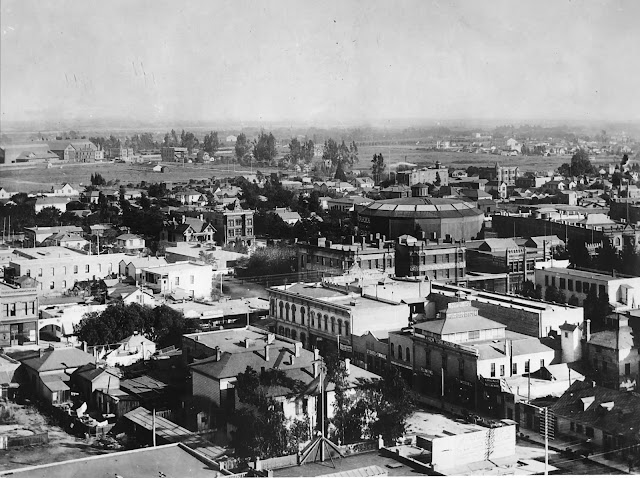












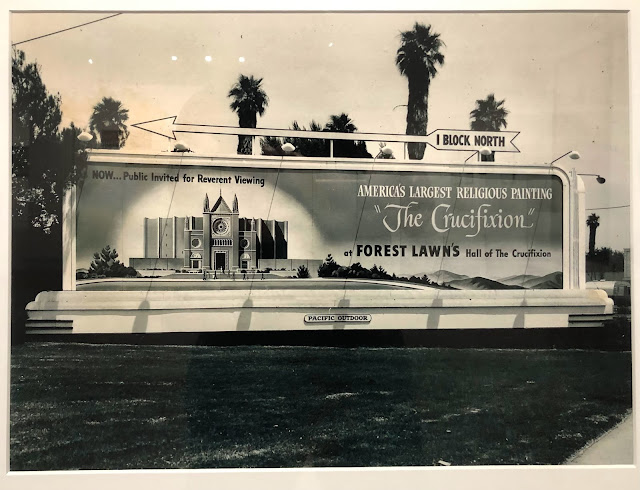
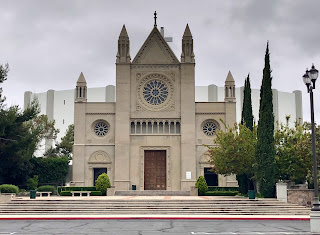


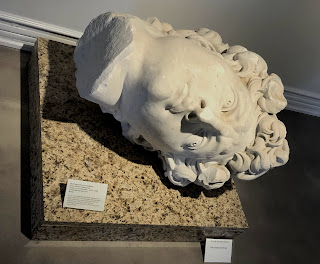






No comments:
Post a Comment